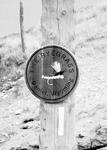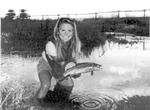|
The Sublette County Journal Volume 4, Number 48 - 7/27/00 brought to you online by Pinedale Online
Owners say change designed to benefit "health of land" but result will be a massive tax cut by Rob Shaul In December of 1998, the owners of the high-end Ryegrass Ranch subdivision on North Cottonwood Creek voted to change the covenants of their subdivision to allow livestock grazing and haying on their properties. The Ryegrass owners maintain that this change was made to "maintain the land in its current condition." After two years, the covenant change and ag-related activities will qualify the properties on the ranch for agricultural property tax rates - saving the owners thousands of dollars in property taxes. This raises the issue of property tax equity, and what exactly should qualify a property for agricultural property tax rates. The Ryegrass example is one that's being repeated and County Assessors throughout the State are struggling with the consequences. "A Fisherman's Paradise" The Ryegrass Ranch encompasses nearly 4,000 acres on North Cottonwood Creek southwest of Daniel. The property was originally part of the old Marvin Price place and the Jewett Land and Livestock Company. In May 1992, Leon Hirsch bought both ranches as part of a multiple ranch deal in the Cottonwood area that year. In November of 1996, the land was sold to developer Ron Saypol who divided the place into 19 "ranch" sites ranging from 133 to 1,080 acres. The largest parcel had an asking price of $1.1 million. The remaining parcels ranged in price from $155,000 to $375,000, with an average of $288,000.
Home building is actually discouraged by the very restrictive covenants, and as yet, no new homes have been constructed on any of the parcels. Good for the Land or Pocketbook? When Mr. Saypol purchased and developed the property in 1996, he ended all agricultural use on the property. "Each tract may be used for residential and recreational purposes only," he wrote into the covenants. All haying and grazing on the property was stopped, and consequently, County Assessor Janet Montgomery began assessing the parcels as residential properties based on their market value. In December 1998, the Ryegrass Ranch Homeowners Association changed the covenants to allow agricultural use. Association President Brett Vollmar and Ryegrass Ranch Manager Vance Brewer both maintain that the covenant change to allow haying and livestock grazing was made to "maintain the land in its current condition." Says Mr. Vollmar, contacted at his office in Virginia, "It had been a ranch for many, many years . . . and allowing haying and grazing was a nice way to control the grass and the growth and be a good neighbor." However, on March 30, of this year, Mr. Brewer sent a letter to Sublette County Assessor Janet Montgomery informing her of the 1998 covenant change, and notifying her that the Ryegrass had sold hay to the Game & Fish during the summer of 1999, and pastured 600 head of cattle for Hirsch's Antelope Run Ranch. "The Association has and will continue to make improvements in irrigation and land improvements to increase the agricultural production of the properties," wrote Mr. Brewer. "We are currently working with the Natural Resource Conservation Service on land improvement projects." He concludes, clearly implying a change in property tax rates was in order, "Your consideration of this issue would be appreciated." Two qualify for agricultural tax rates, a property must be used for agricultural purposes for the two previous years. Thus, the Ryegrass will qualify for agricultural property tax rates in 2001. When Mr. Vollmar was asked directly if the Ryegrass owners had changed their covenants just so they could decrease their property tax bill, he became very defensive. Lowering the property taxes by qualifying for the agriculture tax rate was "not a primary factor in making the decision," to change the covenants said Mr. Vollmar. "If a benefit occurs, that's fine, but that is not why the decision was made," he continued. "We're trying to do the best for the land." Regardless of Mr. Vollmar's answer, the covenant change and subsequent agricultural use of this "fisherman's paradise" will significantly decrease the Ryegrass Ranch owners' tax burden. According to figures provided by the Sublette County Assessor's office, the estimated market value of all 19 Ryegrass Ranch parcels is $6.036 million. Based on this market value, the Ryegrass owners will pay a combined property tax bill of approximately $36,320 this year. However, agricultural property tax rates in Wyoming are based on the "productive value" of the land. According to Sublette County Assessor Janet Montgomery, the estimated combined productive value of the Ryegrass Ranch this year is $391,000. If the Ryegrass qualified for agricultural tax rates this year, the total tax bill would be just $2,350. Mr. Vollmar himself will benefit from a huge property tax cut next year when his two Ryegrass parcels qualify for agricultural rates. According to the Assessor, Mr. Vollmar will pay approximatley $4,079 in property taxes this year. Next year, when his property will be assessed for its productive value, he will pay approximatley $130 in taxes on his Ryegrass parcels. This equates to a 97% property tax cut. State Addressing the Problem That the Ryegrass owners, who could in essence afford to purchase $288,000 fishing licenses, will next year be able to qualify for agricultural property tax rates, is blatantly unfair, says Ms. Montgomery. "The complete inequity of this," she says, "that they can afford to buy this property, but don't have to pay taxes on its market value, but the normal person in town who owns a home has to pay the higher tax." Ms. Montgomery says her hands are tied. She says she must assess the property at it production value next year, even though the property was sold as a "fisherman's paradise, not an agricultural property." The problem isn't limited to Sublette County. In early June, County Assessors from around the State met before the Joint Agriculture, Public Lands and Water Resources Interim Committee to discuss taxation of agricultural lands. According to Laramie County Assessor Brenda Arnold, County Assessors across the Wyoming are "struggling to determine ag land for ag tax property tax purposes." She says the problem is that the state statutes are not clear enough when it come to defining agricultural land. The current state statutes addressing agricultural property taxes require only that the property have an "agricultural use" for the previous two years, and that it have a "reasonable profit or expectation of profit," from that use. Ms. Arnold says the problem is that the statutes don't specifically define what is 'agricultural use' and what is 'reasonable' when it comes to profit. For many properties, the argument can be made both ways, and this makes assessors uncomfortable. Further, says Ms. Arnold, because of this vagueness, property owners are being forced into the property tax appeal process. "A lot of people are using the ag land tax definitions to get a cheaper tax," says State Senator Gerald E. Geis of Worland. Sen. Geis chairs the Joint Ag, Public Lands and Water Resources Interim Committee, which heard from Ms. Arnold and several other County Assessors in June. Mr. Geis has requested new definitions for ag land and be presented to his committee later this fall for another hearing. He hopes to get a change passed through the legislature during next winter's session. The Wyoming Stock Growers Association's primary goal is to maintain the way legitimate agricultural land is taxed below its market value, says executive director Jim Magagna. Mr. Magana says the Stock growers recognize "wealthy people are taking advantage" of the current definitions, but adds, "we don't think we should draw lines based on income." He cautions that if we draw the line between the wealthy land owner and the struggling rancher, the issue becomes "a class designation rather than a land use designation." Mr. Magagna says he has worked with a small group which will come up with proposed specific definitions for "agricultural use" and "reasonable expectation of profit" for Sen. Geis' committee this fall. Sen. Geis' committee will accept proposed definitions for "ag use" at a public hearing October 5-6 in Lander. Unless there's a change, the Ryegrass Ranch owners will see their property taxes plummet 94% next year. Photo credits: Rob Shaul See The Archives for past articles. Copyright © 1999, 2000 The Sublette County Journal All rights reserved. Reproduction by any means must have permission of the Publisher. The Sublette County Journal, PO Box 3010, Pinedale, WY 82941 Phone 307-367-3713 Publisher/Editor: Rob Shaul editor@scjonline.com |

